2
Do you have any thoughts on this post?
This is the first piece of a two-part series on how to improve Sitka black-tailed deer habitat in Southeast Alaska. This blog focuses on the role that old-growth forests play in determining hunting opportunities for deer. A future discussion will address approaches for improving deer habitat in unmanaged stands of second-growth forests.
A small deer with a big role
Despite their relatively small physical stature, Sitka black-tailed deer play a big role in the hunting traditions of Southeast Alaska, where they are the most pursued species of big game. These short and stocky ungulates, which are a subspecies of mule deer, serve as an important food source in a remote region where store-bought groceries—which are typically transported by plane or boat—are costly and limited. Many rural residents, both Alaska Natives and non-Native people, practice a subsistence lifestyle and rely on the rich, wild resources of the Tongass, such as deer, salmon, grouse, berries, mushrooms, and more.
Sitka black-tailed deer also provide one of Alaska’s best hunting opportunities for non-residents. During the 2021-2022 season, non-residents could harvest up to six deer on Admiralty Island with an over-the-counter tag. Many other big game species in Alaska require non-resident hunters to hire a guide and/or draw a coveted tag in a competitive lottery. Sitka black-tailed deer offer the most abundant opportunities for unguided hunters from the Lower 48.
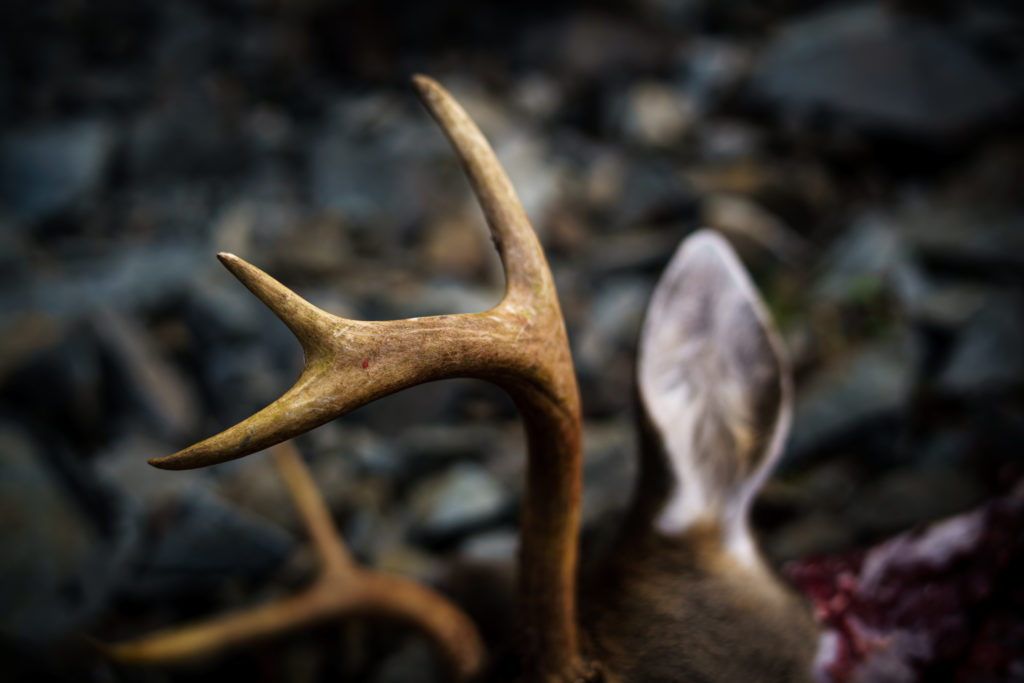
The Tongass: a mosaic of deer habitat
Sitka black-tailed deer are native to the coastal rainforests of Southeast Alaska and northern British Columbia. Populations have also been introduced on many of the islands in Prince William Sound, near Yakutat, and on Kodiak and Afognak Islands. Much of the habitat that these animals rely on is located within the Tongass National Forest.
At 17 million acres, the Tongass is the United States’ largest national forest and the largest temperate rainforest in the world. Its remaining stands of old-growth timber—primarily large western hemlock and Sitka spruce trees that range from 200-700 years old—provide an ideal mosaic of habitat that is critical to the survival of deer, especially in heavy snow years. Severe winter weather is one of the biggest factors influencing the dramatic population swings affecting deer, according to the Alaska Department of Fish and Game (ADFG).
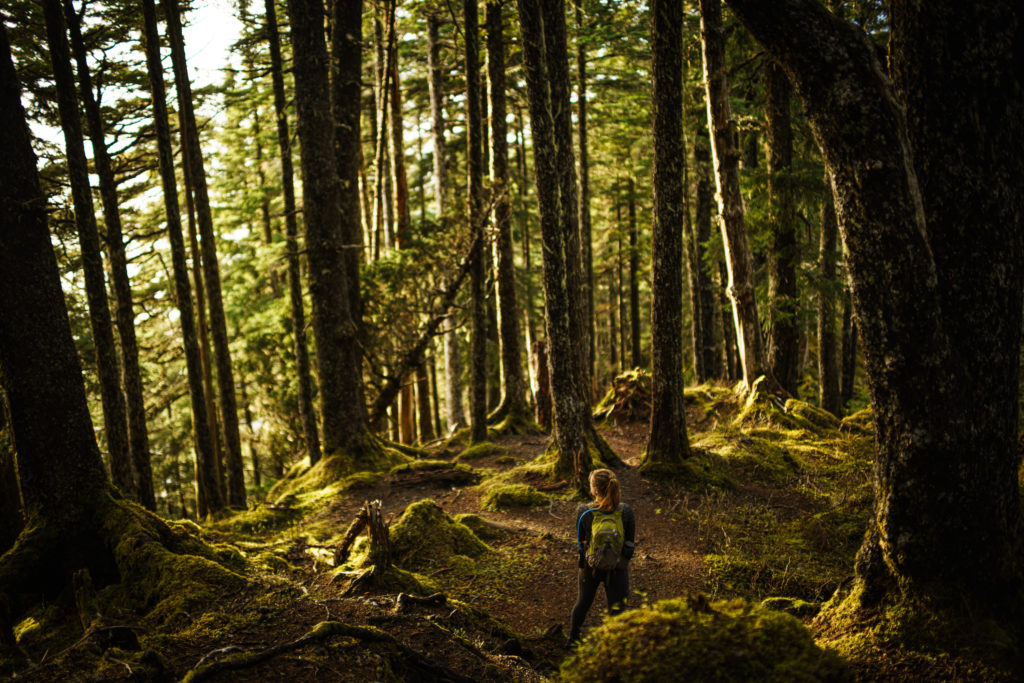
Mature forests make the best winter range
From a deer’s perspective, not all forests are created equal. Two general factors determine the suitability of winter range in forested areas: a productive understory that provides a variety of high-quality forage, and a canopy-like overstory that prevents those food sources from being buried by snowfall.
A blanket of snow not only reduces the quantity of forage accessible to deer, it also decreases its quantity. About four inches of snow is all it takes to bury nutrient-rich herb-layer forages and non-woody plants like bunchberry and trailing bramble. Although deer will eat deciduous shrubs and conifer forage when their preferred foods are covered by snow, these lower-quality foods cause deer to lose weight (Hanley et al. 1984).
At the same time, when snow depth reaches approximately 10 to 12 inches, deer sink in the snow beyond their front knee, which greatly increases the amount of energy required for deer to walk and run.
As snow depth builds, a deer’s diminished energy intake and heightened energy expenditure poses a significant threat to its survival. Population declines in Sitka black-tailed deer have typically been attributed to starvation during winters with deep and persistent snow.
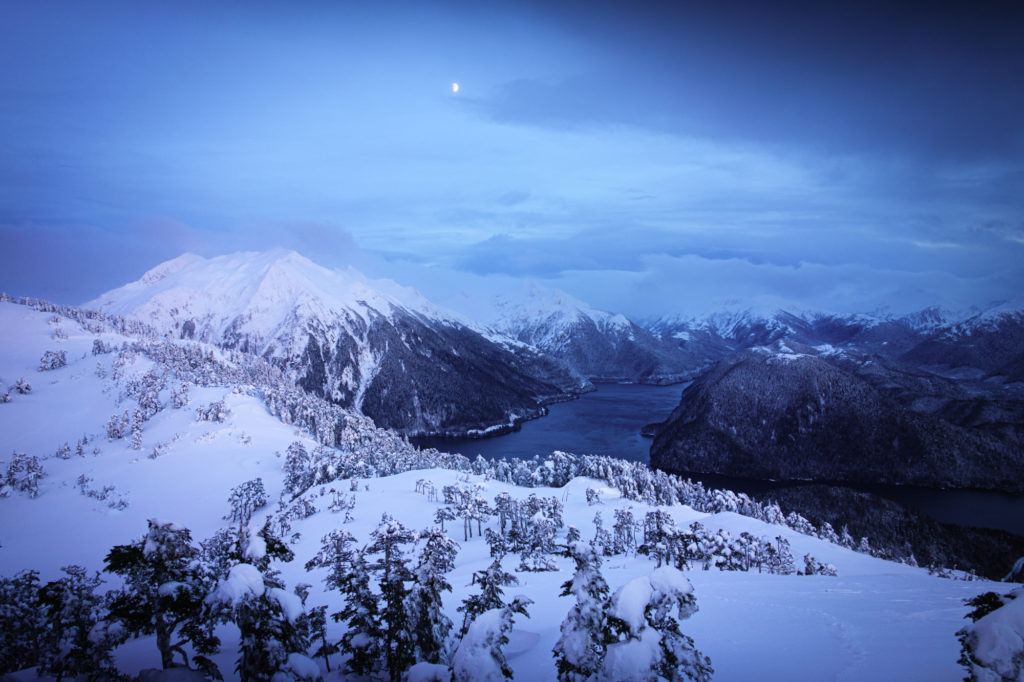
A common misconception about clearcuts
While many hunters view clearings from logging as beneficial for deer habitat, the severe winters in Southeast Alaska create a different situation, where old-growth stands are most beneficial. It’s true that young, open stands provide forage during snow-free months. However, a lack of mature trees to intercept snow often makes these food sources unavailable during Alaska’s harsh winters. Deer also face higher predation risks in snowbound open areas.
As these clearings transition into even-age second-growth stands (>20-30 years), the available forage is reduced substantially as the closure of the forest canopy virtually eliminates the understory. These conditions persist for the remainder of the 90- to 125-year timber harvest rotation (Schoen and Kirchhoff, 1984). Data from fecal pellet studies confirms that Sitka black-tailed deer use quality old-growth habitat year-round more than recent clearcuts and unmanaged, closed-canopy young growth.
In discussing the threats facing Sitka black-tailed deer, ADFG cautions, “habitat capability and deer numbers are expected to decline in some areas as large tracts of previously logged areas reach the closed canopy stem exclusion stage and become extremely poor deer habitat. Population models predict declines in deer carrying capacity in the Ketchikan area of 50–60 percent by the end of the logging rotation in 2054.”
In the long run, a deer population that is forced to rely on unmanaged clearcuts will suffer.
Note: A future blog post will address strategies for managing young-growth forests to improve wildlife habitat.
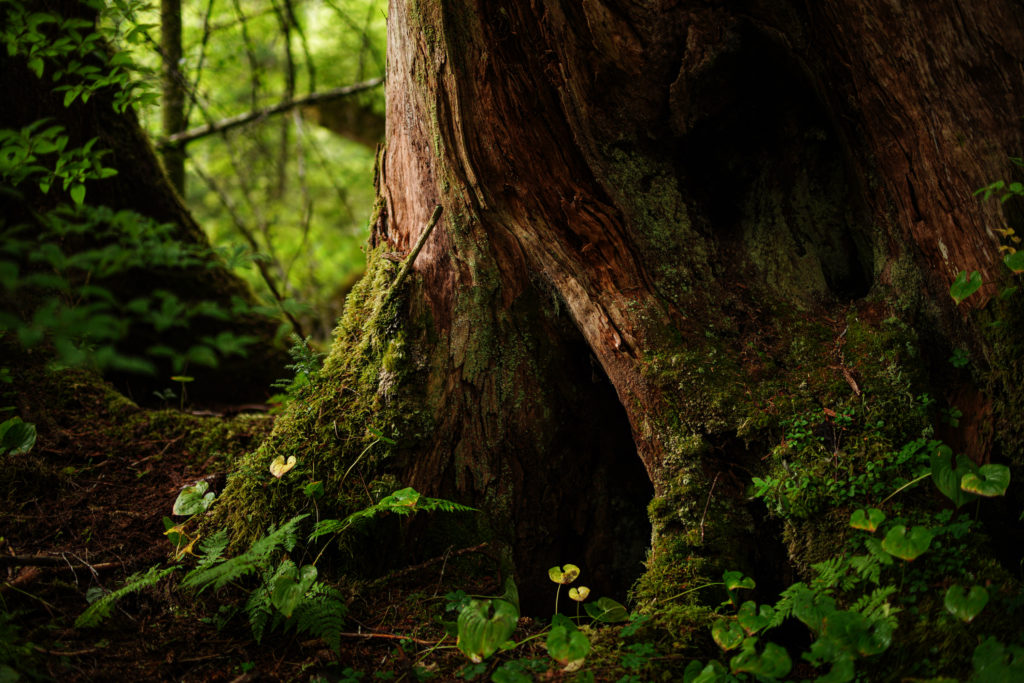
Take action for Sitka black-tail habitat
The greater the expanse of mature forests, the greater the opportunity for wintering deer to obtain sufficient energy and maintain healthy populations. That’s why the TRCP supports reinstating the Roadless Rule in Alaska, which will restore safeguards to more than 9 million acres of undeveloped forests in the Tongass, including critical Sitka black-tail habitat. Join us in sharing your support for the Roadless Rule with the Forest Service.
Photos courtesy of Bethany Goodrich.
Bjorn Dihle is a lifelong Southeast Alaskan whose world revolves around the incredible habitat and fish and wildlife resources of the region. As a wildlife guide and writer, he knows how fortunate he has been to enjoy the wild backcountry of the Tongass National Forest, a legacy that he hopes to pass on to his young sons one day. As a result, Dihle has been an outspoken advocate on behalf of the balanced management of the nation’s largest national forest, working to see a reinstated Roadless Rule safeguard more than 9.2 million acres of undeveloped habitat.
Bjorn’s latest book, A Shape in the Dark, is a fascinating and memorable tribute to brown bears. Outside Magazine, which describes it as “part history, part adventure narrative,” named it one of its best books of 2021. Purchase on Amazon Smile to build your conservation library while supporting TRCP’s work.
Here is his story:
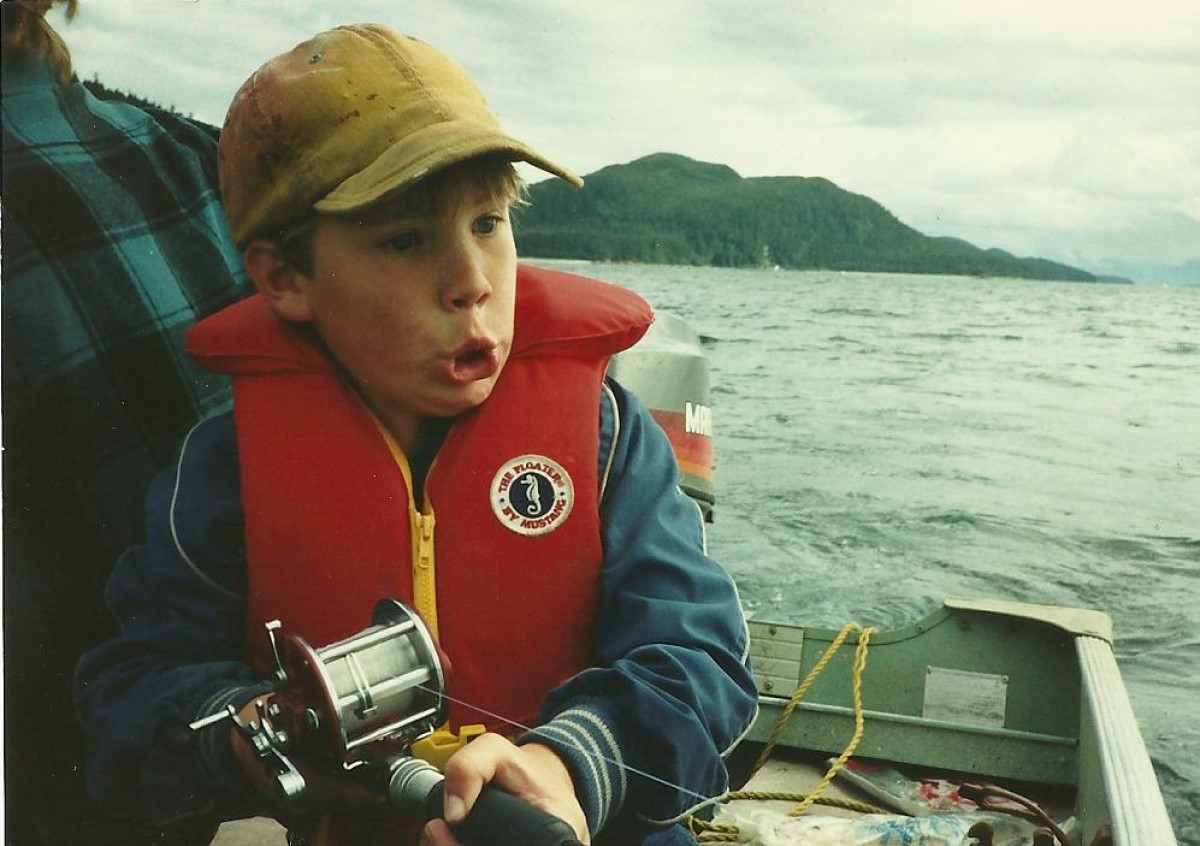
My dad and my mom moved from California to Alaska when they were in their early twenties. Dad wanted to hunt, fish, and experience the wild country of the Tongass National Forest. My two brothers and I grew up listening to his stories and following him around in the woods. He untangled countless yards of our fishing line and we spooked who knows how many deer during our early “hunts” with him. He bought each of us our first big game rifle. Just as important, he instilled a reverence for wild places and animals in us that still guides me today.
I could probably only hunt Southeast Alaska for the rest of my life and be happy. Sitka blacktail is my favorite meat and an August alpine deer hunt is darn near impossible to beat. I love caribou and sheep country up in interior and northern Alaska, but I’m happy to wander there without a rifle. I was lucky enough to be born and live where I am.
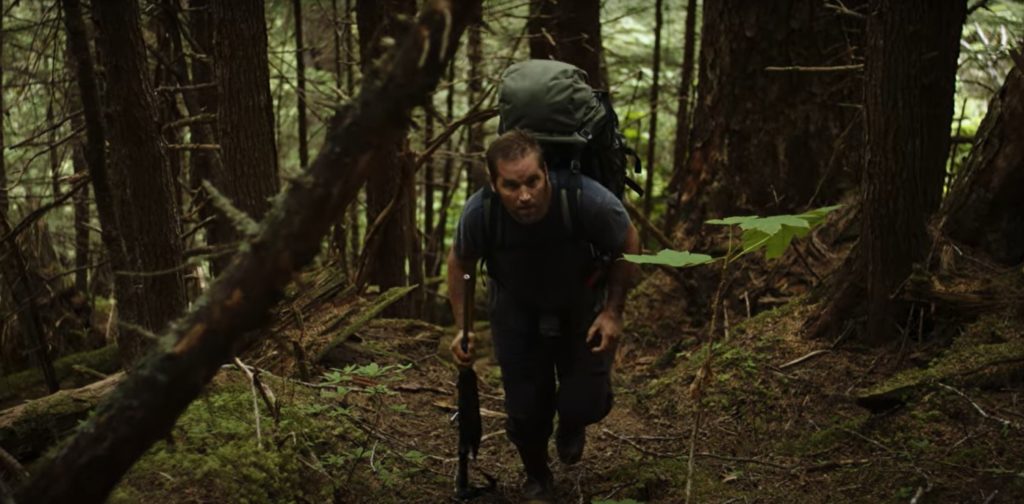
One of my most memorable experiences outdoors occurred on Chichagof Island, where during a late spring evening I counted 35 brown bears feeding in one watershed. There were a fair amount of Sitka blacktails, too. In the 1980s, the Forest Service had wanted to clearcut this area and surrounding mountains. Biologists, hunters, and people who care about wild places fought hard and ended up saving the watershed. Watching all those bears go about their business, surrounded by mountains covered in old growth forest, was a good reminder that we can save the wild places we love if we’re willing to stand up and fight.
Conservation is the only reason that I’m able to live the life that I do. My income mostly comes from guiding natural history film crews, primarily after brown bears, but occasionally I get to work with other wildlife, like wolves and moose. The meat my family eats is basically all wild, with deer and salmon making up the lion’s share. Deer, salmon, brown bears, and the whole Southeast Alaska ecosystem are tied to healthy habitat. And here, old growth forest is the most ecologically valuable habitat. Protecting old growth forest from being clearcut and trying to keep our salmon fisheries productive is key to preserving my lifestyle.

We need to reinstate the Roadless Rule and halt industrial clearcut logging of old growth in the Tongass. We also need to support the Southeast Alaska Sustainability Strategy and long-term protections for the Tongass’s remaining old growth. There’s also a stampede of gigantic open-pit mines being built in British Columbia on rivers shared with Southeast Alaska—these waterways also provide critical spawning habitat for our salmon. Runs are already becoming depleted in the region, and if we lose salmon, we will lose an integral part of the ecosystem.
My food, income, and health all come from wildlife and good habitat. I have two sons—a baby and a two-and-a-half-year-old self-described “big boy man.” I really want those boys and future generations to have similar opportunities to live, work, and hunt the way I do. When my boys are men, I want them to be able to fill their freezers with venison and salmon. I want salmon runs flooding our streams, brown bears trudging ancient trails beneath giant trees, and plenty of deer in the forest. Without those things, Southeast Alaska just wouldn’t be the same.
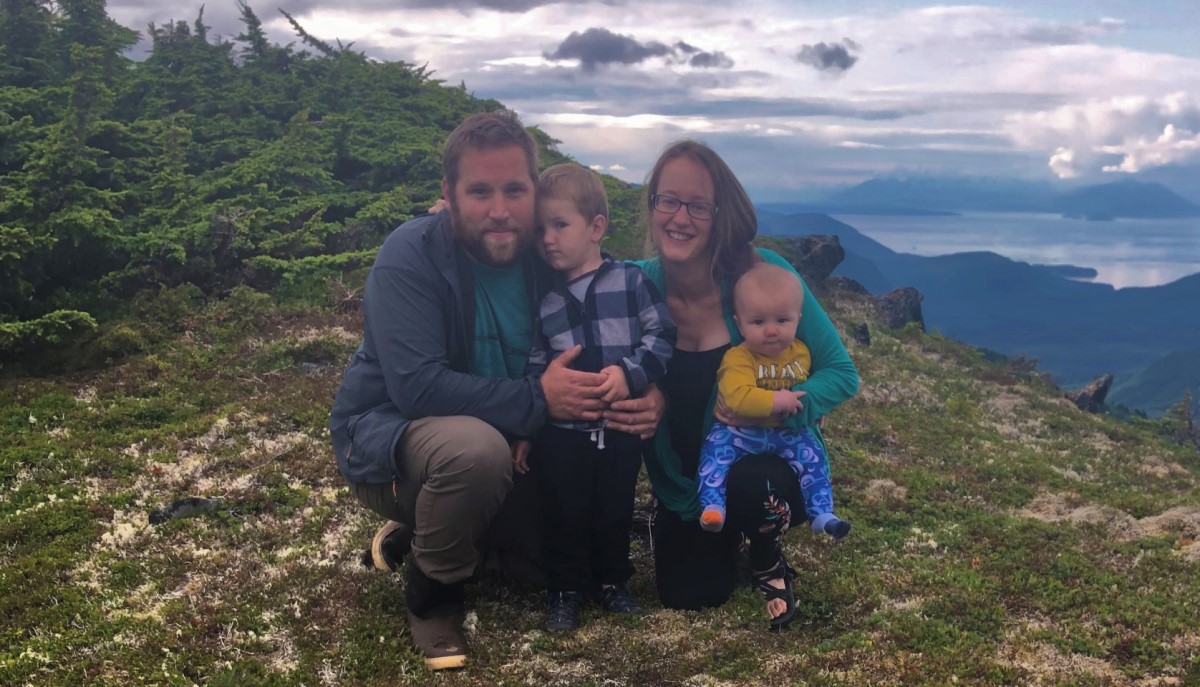
Facebook profile: @BjornDihleauthor
Instagram handle: @bjorndihle
Shallow-water purse seining for menhaden contributes to beach erosion and damages nursery habitats for redfish, speckled trout, sharks, jacks, mackerels, blue crabs, and other species. To ensure that Louisiana’s coastal habitat can continue to support billions of dollars in revenue from recreational fishing and wildlife tourism, as well as thousands of vital jobs, the TRCP and its sportfishing partners have been calling for a regulated buffer zone that would restrict industrial menhaden harvest to deeper waters, reducing habitat impacts and conflicts between pogie boats and anglers.
On Thursday, the Louisiana Wildlife and Fisheries Commission amended a proposal to create a restricted zone that would limit industrial menhaden fishing within a quarter mile of the state’s coastline. Unfortunately, the original proposal did not go far enough to prevent erosion and habitat damage, and Thursday’s amendment would further reduce the size of the buffer along sensitive marshes on the western shore of Breton Sound—making an already inadequate measure even weaker.
Public comments submitted over the last two months overwhelmingly favored strengthening the proposal by expanding the restricted area to at least a half mile from beaches and sensitive shallow water areas. The Commission’s vote Thursday showed that those comments have been largely ignored.
Sportfishing advocates were in favor of last year’s legislative action to create a half-mile restricted zone to help conserve and protect surf zone habitat, reduce harmful bycatch, and protect Louisiana’s recreational fishing economy and culture—a legislative solution that the menhaden industry strongly opposed. The bill ultimately failed, but the commission could achieve the same goal by expanding the proposed restricted zone. Unfortunately, the Commission does not seem intent on voting in favor of conservation.
The lone bright spot resulting from the amendment is it gives all concerned about this issue additional time to continue to voice opposition to a feeble, quarter-mile buffer zone.
What difference does a quarter mile make? Let’s dive deeper.
The menhaden reduction fishing industry—namely two companies, Omega Protein and Daybrook Fisheries—has reported that their boats only fish in waters 12 feet or deeper, so the large vessels don’t hit the bottom. In past discussions of this issue with the Commission, menhaden industry representatives and some commissioners have claimed that it is impossible for the boats to operate in shallow-water areas, where the vessels run aground, and that the industry would not risk the damage to the vessels by operating them in water depths of 5 to 10 feet.
Almost the entire proposed, one-quarter-mile restricted zone is in depths of up to just 6 feet. Amending the buffer zone to at least a half mile, which would include depths between 6 and 12 feet, would decrease the negative impacts of purse seining that plague Louisiana’s coast. If the claims from Omega and Daybrook are true—and they cannot risk the damage to their vessels by having them contact the bottom—there should be no issue with a half-mile buffer zone, which would only restrict fishing in areas that are supposedly too shallow for industrial pogie ships.
There’s good reason to keep these vessels out of shallow water as a policy, instead of trusting the companies’ assertions that pogie boats don’t go that close to shore: Numerous eyewitness accounts and videos show them intentionally running aground and displacing large volumes of sediments in waters inside a half mile of beaches. [Watch the video for actual footage of this happening within yards of recreational fishing boats.]
The Gulf menhaden fishery is the largest fishery by volume in the contiguous United States, and Louisiana accounts for 80 percent or more of all menhaden catches in the Gulf of Mexico, with over 900 million pounds harvested in 2020. Industrial pogie fishing made up almost half of all catches in the Gulf from 1980 to 2016.
Even if no more than 5 percent of the fish they harvest are species other than menhaden or herring (per Gulf-wide bycatch restrictions) the amount of potential bycatch is still immense. Sadly, the data from Omega and Daybrook regarding bycatch of important pogie predator species—including redfish, speckled trout, blacktip shark, and king and Spanish mackerel—is not publicly disclosed.
Efforts should be made by the menhaden industry to measure the environmental effects of their bycatch and to prove that the pogie fishery poses no risks to Louisiana’s fragile coastal ecosystem. In the meantime, bycatch of species like speckled trout, blue crabs, redfish, and some mackerels would be reduced by restricting harvest in nearshore areas.
Omega and Daybrook frequently tout their Marine Stewardship Council certification as an indicator of their sustainable fishing operations in the Gulf. However, they have funded studies that deny the correlation between menhaden abundance and predator populations—directly contradicting MSC Fisheries Standards. Other studies have shown that pogies and other forage fish ARE correlated with the abundance of seabirds, king and Spanish mackerel, and blacktip sharks. The menhaden industry has blatantly disregarded MSC principles, further proving their unwillingness to accept the negative impacts of their operations along Louisiana’s coast.
If Omega and Daybrook want to demonstrate the effectiveness of a quarter-mile buffer zone versus a half-mile, they should prove through transparent and independent science that they are not harming our coastline by damaging the delicate intertidal zone or killing massive numbers of animals that depend on pogies as prey, like redfish, speckled trout, and seabirds.
The current fishery management strategy does not include a harvest control rule, coastwide catch limit, or accountability for overfishing. The implementation of, at minimum, a half-mile restricted zone for the industrial menhaden fishery is a necessary first step toward the conservation of Gulf menhaden, the wildlife and fish that depends on them, and the critical surf-zone habitat in Louisiana.
We have urged the Commission to amend the proposed quarter-mile restricted zone to a minimum of a half mile, and we will continue to push for meaningful conservation measures in the menhaden industry. Please send comments to comments@wlf.la.gov and keep following the TRCP for further updates on how to take action.
Top photo by Jay Huggins via Flickr.
In 2016, the U.S. Fish and Wildlife Service released a report that showed 6 percent of the U.S. population participated in hunting. Within that group, 97 percent identified as white, and 90 percent were male. The data indicated that Hispanic and Latino participation accounted for just 3 percent of all hunters, while the 2020 U.S. Census data shows that Hispanics account for 19 percent of our population.
The TRCP wanted to better understand why the Hispanic and Latino communities in the U.S. participate in hunting at a reduced capacity. To do this, the TRCP partnered with Colorado Parks and Wildlife to facilitate two roundtable meetings, where Latino participants could share what barriers, they face when trying to participate in hunting.
Fourteen members of the community—from lifelong, multi-generational hunters to beginners who want to learn more—joined TRCP and CPW staff in addition to facilitators from the Meridian Institute and were compensated for their time. This resulted in the creation of a toolkit that is being shared with other state wildlife agencies on how to better engage diverse communities in hunting.
Here’s how state agencies can serve these hunters better.
Establish Trust and Sincerity
Roundtable participants believed that establishing trust is essential when trying to connect with all communities. Efforts that don’t feel sincere can create further irreparable damage between communities and perpetuate the lack of trust. Agencies can build sincere relationships by identifying and working with trusted partners that already exist in the Latino community, being open and ready to modify programs based on community feedback and ensuring that programs are sustainable and not one-and-done.
Examine Messaging and Whose Stories Are Told
In the roundtable meetings, participants indicated that the messaging around hunting often makes it seem like a white space in the eyes of people of color, and many had encountered discrimination and profiling when they were out in the field simply trying to participate in outdoor activities. Storytelling was suggested as an avenue to change that.
Many of the participants were multi-generational hunters and had strong familial connections to hunting—but their stories were rarely told in outdoor media. If stories from the broader Latino hunting population were amplified by state wildlife agencies, it would create the narrative that Latinos are welcome and respected in the hunting community. It would also ensure that there is not an erasure of their history as hunters and conservationists.
Additionally, participants flagged certain terminology that could promote bias. Terms like “huntsmen” or “huntmasters,” for example, can be exclusive of women and people of color, reinforcing the narrative that hunting is a white, male-dominated space.
Similarly, each state agency should get to know its Latino and Hispanic communities and dial in the terminology for addressing these groups—“Hispanic” and “Latino” are very broad terms that encapsulate people of many backgrounds and heritages. When possible, roundtable participants indicated that they’d much prefer the use of terms for specific communities and regional identities, such as Chicano, Mexican American, and Tejano.
Use Data Collection and Monitoring to Improve Engagement and Outreach
Participants thought that it was important for state agencies to collect demographic data and that it be available to the public. Collection of demographic data should be done in a clear and concise manner that has its intent clearly explained. This would better identify who is participating in hunting and how broader participation could be achieved at a state and regional level. Demographic data collection would then help to further design and facilitate engagement and outreach programs for women and people of color. Programs that meet communities where they are important for the future of conservation and hunting. To have the best chance of success, state agencies should partner and co-host hunting education programs with organizations that are already serving Latinos and other communities, such as Hispanic Access Foundation and Latino Outdoors.
Improve Transparency
Feedback from roundtable participants indicated that it is easy for people to get discouraged and disenfranchised when they are enthusiastic about participating and learning to hunt but repeatedly fail to draw tags. Agencies must provide clear and concise information about the unbiased draw process and publicize other opportunities to participate in hunting when you don’t draw tags, such as over-the-counter or novice licenses.
Why This Work Is Important to TRCP
Our public lands and outdoor access are valuable to people of all backgrounds and demographics. Our public lands can be healing for individuals and our nation. By taking steps to welcome prospective hunters from Latino and Hispanic communities, we can change the narrative and ensure that all people have the opportunity to participate in the outdoors and share in the responsibility of conservation.
Top photo courtesy of Gregg Flores.
Theodore Roosevelt’s experiences hunting and fishing certainly fueled his passion for conservation, but it seems that a passion for coffee may have powered his mornings. In fact, Roosevelt’s son once said that his father’s coffee cup was “more in the nature of a bathtub.” TRCP has partnered with Afuera Coffee Co. to bring together his two loves: a strong morning brew and a dedication to conservation. With your purchase, you’ll not only enjoy waking up to the rich aroma of this bolder roast—you’ll be supporting the important work of preserving hunting and fishing opportunities for all.
$4 from each bag is donated to the TRCP, to help continue their efforts of safeguarding critical habitats, productive hunting grounds, and favorite fishing holes for future generations.
Learn More
